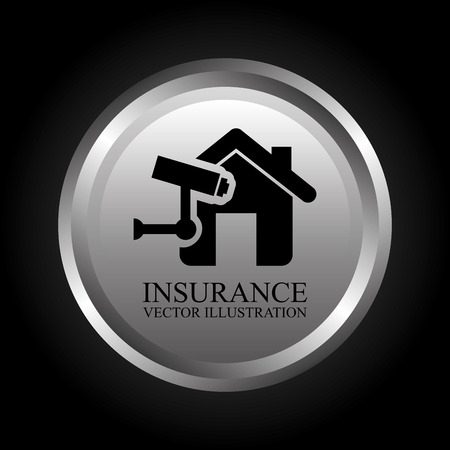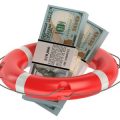Overview of Home Insurance Policy Types
When it comes to home insurance in the United States, understanding the variety of policy types available is essential for homeowners looking to manage their risks and control premium costs. The American insurance market offers several standardized policy forms, commonly labeled as HO-1 through HO-8. Each of these policies is designed to address specific needs, property types, and coverage levels.
The most basic option, the HO-1 or “Basic Form,” provides limited protection against a short list of named perils like fire or theft but is rarely offered today due to its narrow scope. Moving up, the HO-2 or “Broad Form” expands coverage to include more perils and is suitable for homeowners seeking a balance between cost and protection. The most popular choice across the country is the HO-3 or “Special Form,” which covers your home against all perils except those specifically excluded by the policy—a significant advantage for risk-conscious property owners.
For renters, the HO-4 or “Contents Broad Form” focuses on protecting personal belongings rather than the structure itself. Condo owners typically opt for the HO-6 policy, tailored to their unique ownership situation. Meanwhile, older homes that may not qualify for standard policies often require an HO-8 form, which accommodates properties with historic value or non-standard construction.
Each of these policy types comes with distinct coverage features and limitations, directly influencing how much youll pay in premiums and how well your assets are protected. Understanding these differences is key to making informed decisions about your home insurance strategy—whether youre a first-time buyer in Texas or a seasoned investor in New York.
Key Coverage Differences and Their Premium Implications
When choosing home insurance in the United States, understanding the differences between policy types is essential for both effective risk management and cost control. The three most common coverage levels—basic, broad, and comprehensive—each offer unique protection features that directly influence your premium costs. Here’s what homeowners need to know when evaluating these options:
| Coverage Level | What’s Covered | Typical Premium Impact |
|---|---|---|
| Basic (HO-1) | Named perils only (e.g., fire, theft, vandalism); usually covers structure but limited personal property protection | Lowest premiums; limited risk coverage means higher out-of-pocket risk for unlisted events |
| Broad (HO-2) | Expanded named perils (includes basic plus additional risks like falling objects or water damage from plumbing) | Moderate premiums; broader protection but still limited to listed perils only |
| Comprehensive (HO-3/HO-5) | All-risk/open-peril coverage for structure and often for personal property; exclusions specifically listed in policy | Highest premiums; maximum protection with fewer gaps in coverage |
Premium Considerations by Policy Type
The level of coverage you select has a direct impact on your annual premium. While basic policies can be tempting for their low upfront cost, they transfer more risk back onto the homeowner if an uncovered event occurs. Broad policies provide a middle ground, but still require careful review to avoid unexpected gaps. Comprehensive policies, though pricier, offer peace of mind and robust financial protection against most scenarios.
Risk Exposure: What Homeowners Should Weigh
Homeowners should consider their personal risk tolerance and local exposure—such as regional weather patterns or crime rates—when selecting a policy. For instance, if you live in an area prone to wildfires or hurricanes, opting for comprehensive coverage could prevent devastating financial losses. On the other hand, if you’re comfortable self-insuring minor risks or have substantial emergency savings, a basic policy might make sense—but always be aware of what’s excluded.
Bottom Line for U.S. Homeowners
Your choice of policy type is not just about what you pay today but how much risk you’re willing to shoulder tomorrow. Review your current assets, local hazards, and long-term financial goals before locking in your home insurance plan.

3. Regional Factors Shaping Premium Rates
When it comes to home insurance premiums across the United States, where you live matters just as much as what policy you choose. The risk landscape in each region—shaped by natural disasters, local crime rates, and state-specific building codes—interacts directly with your policy type and coverage limits to determine your final premium.
Natural Disasters: Risk on the Rise
States prone to hurricanes, wildfires, earthquakes, or floods, like Florida, California, and Texas, often see higher base premiums. Insurance providers factor in the likelihood of catastrophic events damaging homes when pricing policies. For example, if you select a comprehensive policy in a high-risk flood zone but opt out of flood coverage (which is usually separate), your premium might reflect both your potential exposure and your choice to self-insure for that risk.
Crime Rates: Neighborhood Security Counts
Insurers also weigh local crime statistics. Higher crime areas—where theft or vandalism is more common—can push premiums up, regardless of the policy type. However, choosing a policy with robust personal property protection or additional endorsements for theft can further influence costs. Homeowners in safer neighborhoods may see discounts or lower baseline rates when they select similar coverage levels.
Building Codes and Policy Fit
Regional building codes add another layer of complexity. Some states require stricter construction standards due to environmental risks. Policies that include ordinance or law coverage—which pays for code-required upgrades after a loss—are particularly relevant in these regions. Opting for such endorsements can protect against hefty out-of-pocket costs but will raise your premium accordingly. Ultimately, understanding how these regional factors interact with your chosen policy type allows homeowners to make smarter decisions about balancing cost and risk.
4. Optional Riders and Endorsements
When evaluating home insurance policies across the United States, optional riders and endorsements can have a significant impact on your overall premium. These add-ons allow policyholders to customize their coverage beyond standard protections, but they also introduce additional costs and risk considerations that should not be overlooked from a self-employed, risk management perspective.
Popular endorsements include flood insurance, earthquake coverage, and umbrella liability protection. Since standard home insurance typically excludes flood and earthquake damages, these risks require separate or supplemental policies—especially important in high-risk zones such as coastal areas (for floods) or along the West Coast (for earthquakes).
Umbrella endorsements are another valuable add-on for homeowners with significant assets or increased liability exposure. They provide an extra layer of protection above standard liability limits, which is especially relevant if you work from home or host clients on your property.
Cost Impacts of Common Add-Ons
| Add-On Type | Typical Annual Cost Range | Relevant Risk Factors |
|---|---|---|
| Flood Insurance | $400 – $1,500+ | Located in FEMA-designated flood zones; coastal states like Florida, Louisiana, Texas |
| Earthquake Endorsement | $100 – $1,000+ | States along the Pacific Ring of Fire (California, Washington, Oregon) |
| Umbrella Liability Policy | $150 – $300 per $1 million in coverage | High net worth individuals; home-based businesses; frequent guests/clients on premises |
Risk Management Takeaway
From a risk control viewpoint, adding these riders can increase your annual premiums substantially but may offer critical financial protection in case of catastrophic events or lawsuits. Its important to balance the additional cost with the unique exposures faced by your household or business activities. Evaluating the necessity and potential return on investment for each rider—based on your propertys location and personal circumstances—can help you make informed decisions that align with both your budget and your risk tolerance.
5. Deductibles, Liability Limits, and Personalization
When it comes to home insurance premiums across the United States, two critical factors—deductibles and liability limits—play a substantial role in determining what you pay. As a self-employed homeowner, understanding how these elements interact within your policy can help you better manage risk and optimize costs.
Deductible Choices: Balancing Risk and Premiums
Your deductible is the amount you agree to pay out of pocket before your insurance kicks in after a covered loss. Generally, opting for a higher deductible leads to lower monthly premiums, while a lower deductible means higher premium payments. This trade-off requires homeowners to assess their financial comfort zone and willingness to absorb more upfront risk in exchange for potential savings over time. For self-employed individuals, cash flow stability might influence whether a high or low deductible is more practical.
Liability Limits: Protecting Against Major Claims
Liability coverage protects you if someone is injured on your property or if you’re found responsible for accidental damage to someone else’s property. Raising your liability limits increases your premium but offers greater protection against costly lawsuits or claims—a crucial consideration for those with significant assets or frequent visitors. In the U.S., minimum liability requirements vary by state and lender, but customizing your limit ensures you’re not left exposed to devastating financial losses.
Personalizing Coverage: Tailoring Policies for Unique Needs
No two homes—or homeowners—are exactly alike. Most insurers now offer a range of policy add-ons and endorsements that let you customize coverage based on location-specific risks (like hurricanes or wildfires), high-value possessions, or special circumstances unique to self-employed individuals who may operate a home-based business. By actively engaging with an agent or using online tools, you can adjust deductibles, expand liability limits, and select targeted protections that match your lifestyle and risk tolerance.
Smart Risk Management Strategies
Personalizing your home insurance isn’t just about reducing costs—it’s about strategic risk management. Consider bundling policies for additional savings, routinely reviewing your coverage as your personal situation evolves, and leveraging available discounts for security upgrades or claim-free histories. Ultimately, understanding how deductibles, liability limits, and customization work together empowers homeowners across the U.S. to take control of their insurance experience and protect what matters most.
6. Strategies for Homeowners to Find Cost-Effective Coverage
As a self-employed individual who understands both the importance of risk management and the reality of budget constraints, finding affordable home insurance in the U.S. can feel like walking a tightrope between protection and cost. Here’s how you can strike that balance and make sure your policy type aligns with your needs without breaking the bank.
Understand What Your Policy Really Covers
Don’t assume all policies are created equal—HO-3, HO-5, and other policy types each have unique coverage features and exclusions. Carefully review the fine print to ensure you’re not over-insuring for risks unlikely in your area (like earthquake coverage in low-risk regions) or under-insuring against common threats (such as hurricanes on the Gulf Coast). Matching policy type to your location and property profile is key for cost-effective protection.
Shop Around and Compare Quotes
Insurance premiums vary widely between providers, even for identical coverage. Use online comparison tools, but also consider reaching out to independent insurance agents who can help you navigate local market nuances. Request quotes for different policy types and deductible levels to see how each impacts your bottom line. Don’t just focus on price—evaluate financial strength ratings and claims service reputation as well.
Raise Your Deductible Strategically
Opting for a higher deductible is one of the simplest ways to reduce premiums, but make sure it’s an amount you can comfortably afford out-of-pocket if you need to file a claim. This approach works best when paired with an emergency fund dedicated to home repairs or unexpected losses.
Bundle Policies for Discounts
Many insurers offer multi-policy discounts when you combine home, auto, or even business insurance under one roof. Bundling doesn’t just save money—it also streamlines administration, which is especially valuable for busy self-employed homeowners.
Invest in Risk Mitigation Upgrades
Improving your home’s safety profile can directly impact your premium. Installing monitored security systems, updating old wiring or plumbing, adding storm shutters, or reinforcing roofs may qualify you for discounts. Always check with your insurer before making upgrades to ensure they’ll result in savings.
Review and Update Coverage Annually
Your insurance needs evolve as property values change or renovations are completed. Schedule an annual policy review—preferably ahead of renewal season—to adjust coverage levels and compare new offerings on the market. Proactive risk management ensures you’re not paying for obsolete coverage or missing out on better deals.
By taking a proactive approach—understanding policy types, shopping smart, leveraging discounts, and maintaining open communication with insurers—you can achieve a cost-effective balance between solid protection and manageable premiums no matter where you live in the United States.


